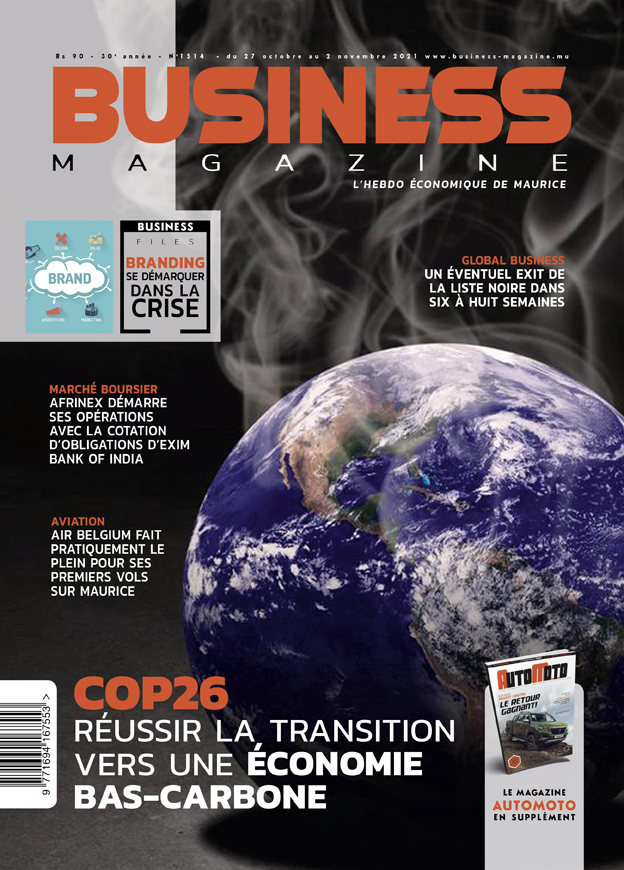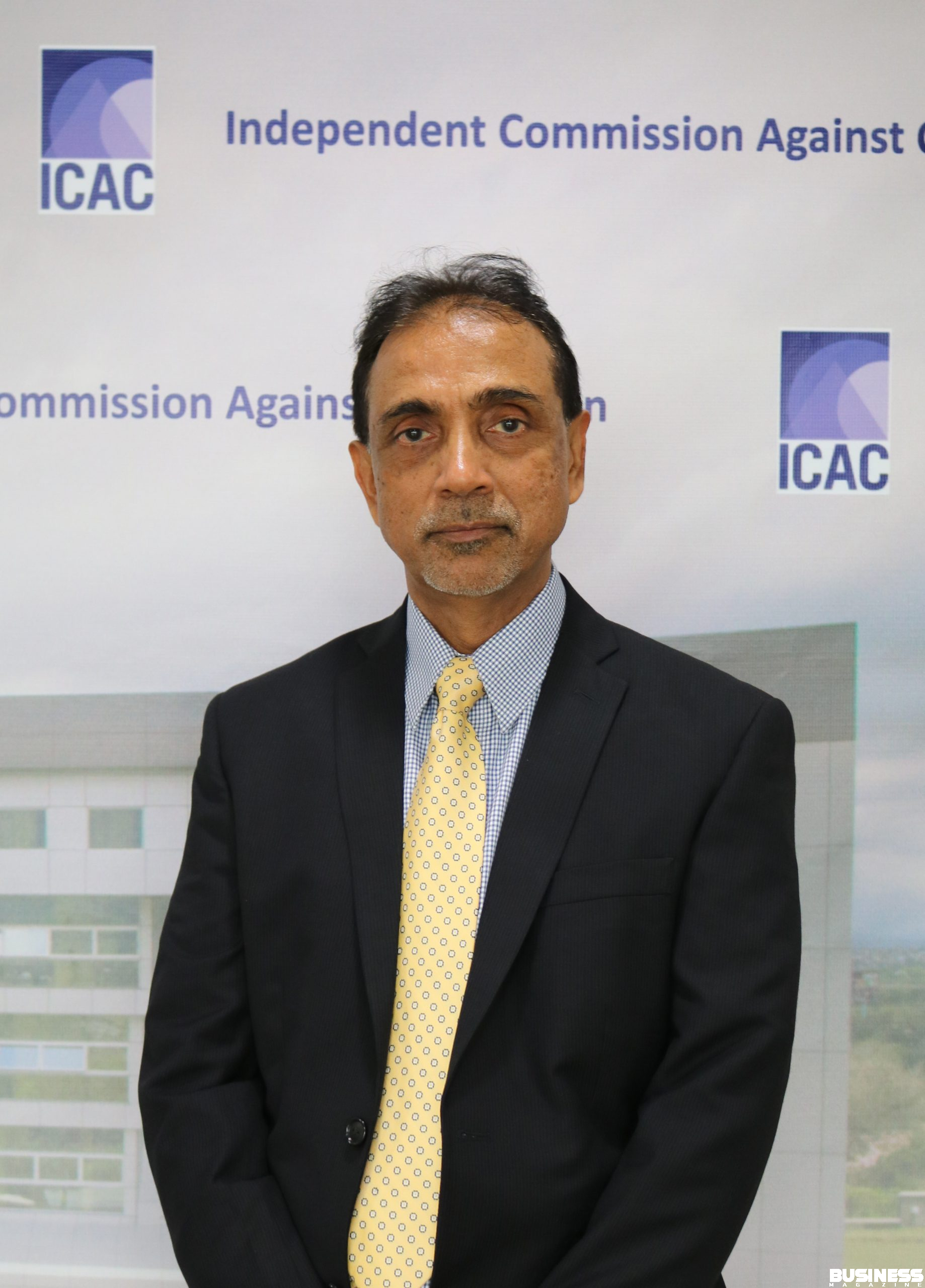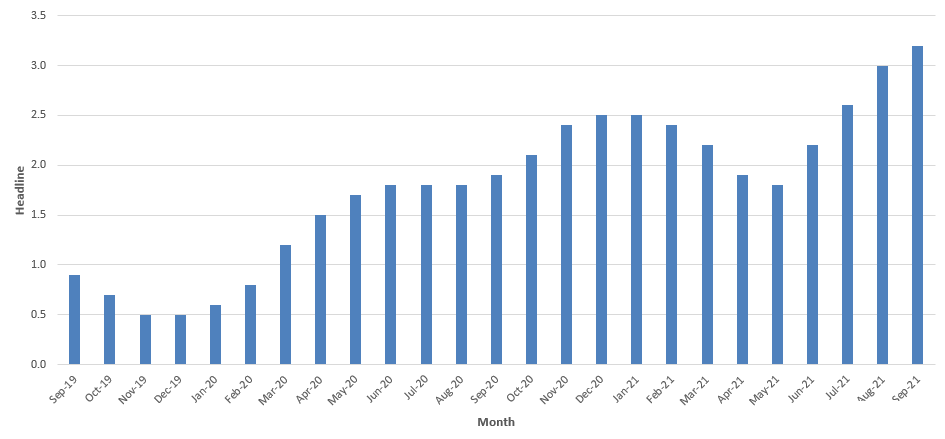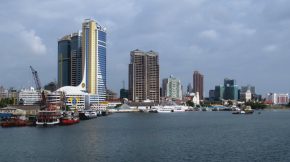Mauritius in 2043
Share

We are in 2043. The business passenger arriving on the Beijing-Mauritius non-stop flight cleared immigration in the second terminal of SSR International Airport, amazed at the efficient and welcoming service. The terminal itself is lively with passengers in transit and/or arriving at their destination. It is a major air hub in this part of the world providing air connectivity to the country with a population of 5 million of this cosmopolitan liveable island city. It is the place to be in the Indian Ocean for companies and professionals doing business with Asia and Africa.
Expatriates know that Mauritius provides high quality education and health care, which are two factors of attractiveness for professionals with families and a lively cultural scene that reflects and enhances the rich culture of Asia and Africa.
The business traveller wonders how this transformation has happened. In 2016, it was still not clear if Mauritius would be able to graduate to a high income country and be among the first African country to be among the rank of first-world countries
In 1968 a new nation, Mauritius, was born. The population was proud to be citizens of a new nation. Yes, there were major challenges facing the country – an economy based on a single agricultural crop, a young population for whom employment creation was needed to avoid a growing unemployed workforce, and a society that just went through a traumatic civil unrest.
By 2016, the citizens of Mauritius had demonstrated their resourcefulness and entrepreneurship. They managed to move the economy up the economic ladder, graduating to a middle-income economy, while achieving full employment during this journey, invested in the physical
infrastructures that allowed good connectivity to the world – port, airport and telecom; and deve-loped into a nation where access to education, health care and public transport was free for most of the population. Quite an achievement in almost 50 years! In 2018, Mauritius celebrated its 50th birthday as a nation and in 2043 Mauritius will be 75 years old.
In 2016, the economy experienced sluggish growth with GDP growth averaging between 3 and 4% during the last five years and with the unemployment rate hovering around 8%, representing around 40,000 unemployed with about 49% aged below 25 years, while headline inflation had been declining since 2011 to 1.3% during calendar year 2015.
The government budget deficit was 3.2% of GDP in 2014 and government debts amounted to 56% of GDP.
During the period 2004-2014, labour productivity grew by an annual average of 2.7%, while capital productivity declined by 0.6% resulting in a multifactor average annual growth rate of 0.7%.
However, at that time there were already signs of forces at play that would shape the next 25 years.
On the domestic front, the country was facing an aging society.The population was projected to grow to around 1,486,000 by 2040 from 1,186,873 in 2000, with the proportion of person aged 60 and above to increase to 23.5% from 9.1% in 2000.
Global forces emerging were urbanization and the resulting pressure on natural resources, climate change, formation of trade blocs, and digital globalization.
In a report published in 2014, according the Jeremy Bentham, Vice President Business Environment at Shell, “Urbanization will be one of the most significant dynamics affecting the future, presenting both opportunities and risks”. According to the report: “New Lenses on Future Cities, it is projected that by 2050 about three quarters of the world inhabitants, which would have grown from seven to nine billion, will live in cities. This would be “building the equivalent of a new city of over 1.4 million people every week”. Among the regions expected to see the greatest growth in urban population is sub-Sahara Africa – particularly Nigeria”.
At the same time, the increase in world population and the improving standard of living would increase the demand on natural resources particularly water, food and energy.
Global warming would bring dramatic climate change to entire regions of the globe and cause the level of the ocean to rise.
Finally, the advent of digital globalization was disrupting major industries, business models and economies. The world was more connected than ever. Digital platforms changed the economics of doing business, enabling start-ups to sell globally, talent to be sourced globally and, for the first time, allowed companies from emerging economies to participate in global trades to compete against established companies in advanced economies.
Mauritius by making the right choices in 2016 became a first-world country by 2043. Instead of looking at these forces as challenges, Mauritius took a different approach, viewing themas opportunities.
Embracing the trend in global urbanization, Mauritius started immediately to acquire and develop the expertise to design, build and manage liveable cities that were sustainable and competitive. It dawn on the government and the private sector that the efforts to develop special economic zones in Africa and the building of smart cities and Heritage City presented the same types of challenges. Instead separately trying to implement these projects, why not join forces to become a leader in this area. Together they could start to acquire the skills set and attract international professionals to develop the cities of the future. A joint public/ private sector effort established The Centre of African Urbanization bringing under one roof experts in city planning and design; sustainable building design and engineering; Internet and Wi-Fi connectivity; energy and water production, distribution and management; waste management; and public transportation and mobility. Using Mauritius as the learning and testing laboratory, the Centre developed a global reputation and enabled the export of its expertise to Africa. By 2043, Mauritius companies are managing projects across sub-Sahara, helping governments to build and manage cities.
The rising level of the ocean presented the country with the opportunity to develop its ocean economy. Instead of viewing the ocean as a threat, the ocean was treated as an ally. Mauritius decided to become one of the leaders in the area of coastal protection services that would be in much need by island countries and by countries having coastal areas. This service industry initially recruited foreign talents but quickly trained Mauritian nationals attracted to this growing industry.
The country set up research centres with the aim of developing new economic activities from and in the ocean. Energy gene-ration from waves has become a source of electricity supply to the country, making Rodrigues becoming an island relying solely on green energy. It ventured into living in the ocean. The country encouraged the construction of under water habitats like hotels, restaurants and entertainment areas. A major training centre in sea navigation and sailing, based in Rodrigues, became one of the main activities attracting international students and gave rise to marine-related activities.
In 2016, Mauritius decided to actively take a leadership role in SADC and COMESA to transform these two economic groups in a combined Common Market of Africa following the realization that the Trans-Pacific Partnership agreement among twelve Pacific Rim countries would have a significant impact on world trade. Africa could be left behind. In addition, the threat of robots in factories became a major challenge to the industrialization of Africa. Companies in advanced economies were no longer setting up production lines in Africa to take advantage of cheap labor as robots could be used in factories in the home countries.
The third new pillar of economic growth was based on the trend of digital globalization. According to a McKinsey study in 2016: “Over a decade, global flows have raised world GDP by at least 10 percent; this value totaled $7.8 trillion in 2014 alone. Data flows now account for a larger share of this impact than global trade in goods.” Using its BPO industry as the base, Mauritius took advantage of this digital globalization to position itself as a major switching point in the flows of global data. And it did not by try to become another Silicon Valley. It developed expertise in data storage and management, data analytics and data security.
How did this happen? First, the country as a whole finally acknowledged that Mauritius would be unable to compete in the manufacturing sector. Robots were displacing workers and this trend was set to accelerate.
The impetus for this development of Mauritius was the realization by all the stakeholders that the “Business as Usual” was unsustainable. Following the questioning of the viability of a real estate development economic strategy in the face of a lack of internal demand, a retreat of Chinese investors from the global economy as the Chinese government adopted measures to stem the flow of outward investments from China, and a slowing of economic development in Africa due to the steep decline in oil and commodity prices, all the stakeholders of the country had no choice but to unite and work as Mauritius Inc. for a better future.
The leaders of the government of the day and the private sector realized that there was a need to adopt a new model of economic development that would also involve the collaboration of intelligent and smart workers.
Mauritius needed to leverage its inherent strengths, namely its geographic position that would provide control over the communication links between Africa and Asia, the trading skills of its private sector, the inherent abilities of its population, its pro business environment and its unique collaboration between the public and private sector.
Government would focus on building the proper physical infrastructure – port, airport and land transport network, provide law and order, an independent judiciary, ensure personal security and the respect of private property.
Government adopted an open door policy to trade, removing all tariffs in a measured manner while implementing measures to assist those workers being displaced through retraining and financial assistance. The strategy was to transform the country into a major trading platform for goods and services and a pivotal interchange point for the global flows of digital data.
It enhanced the business environment by removing all administrative barriers, bringing Mauritius among the top 5 countries in the Doing Business Index of the World Bank.
Both government and the private sector invested heavily in the human capital of the country, reforming the education and training curriculum to equip its population with skills to live a fulfilled life in this modern and changing world and become responsible citizens. The country innovated in the delivery of education and training through the use of digital media to deliver contents at any time, anywhere and making use of social networks and groups.
High speed Internet connectivity was made accessible to all residents as a basic utility like water and electricity.
The private sector was the driving force to venture in the new areas of growth. Local companies partnered with foreign companies and hired professionals to acquire needed expertise. Foreign companies and entrepreneurs set up business in Mauritius due to the ease of doing business, access to markets in Africa and the quality of life in Mauritius.
However, the most crucial policy implemented by the government was the decision to grow the population to five million within 25 years. This had two focused actions: to attract Mauritius citizens back home and to have an intelligent immigration policy. Mauritians studying abroad were given an assurance of a meaningful employment upon the successful completion of their studies in fields of relevance to the joint vision of the government/private sector. At the same time, government worked together with the private sector to attract professional talents in the new growth areas identified. The goal was to have a population mix of 50% Mauritian nationals and 50% foreign nationals as permanent residents by 2043.









